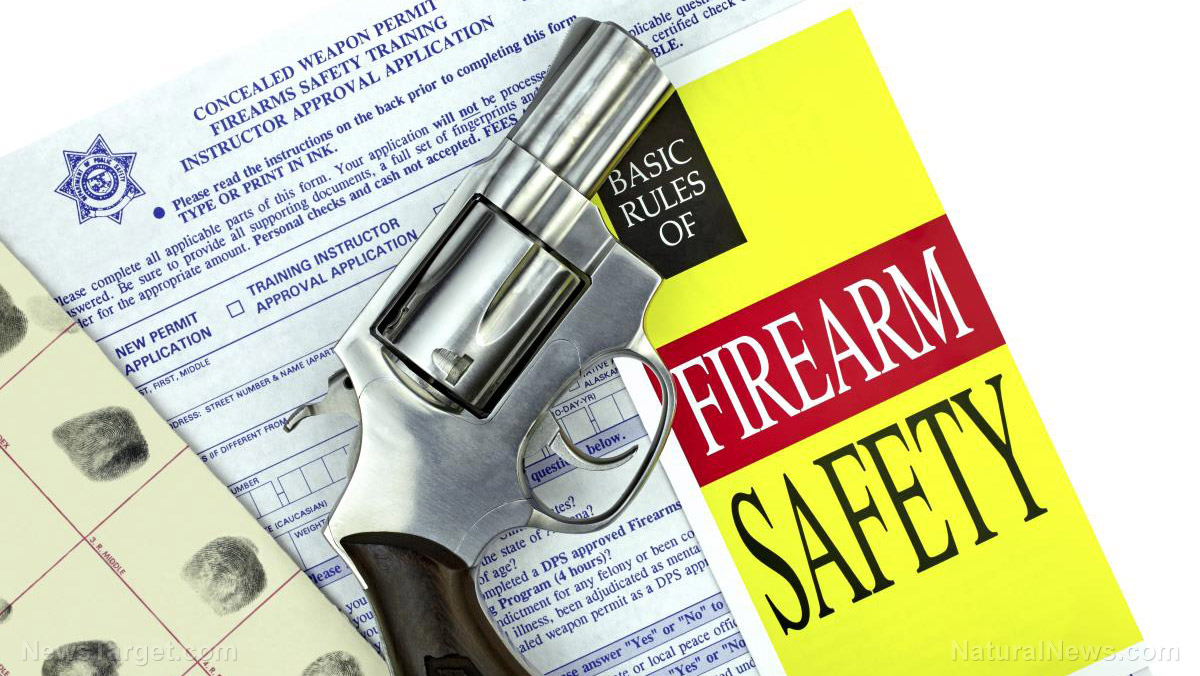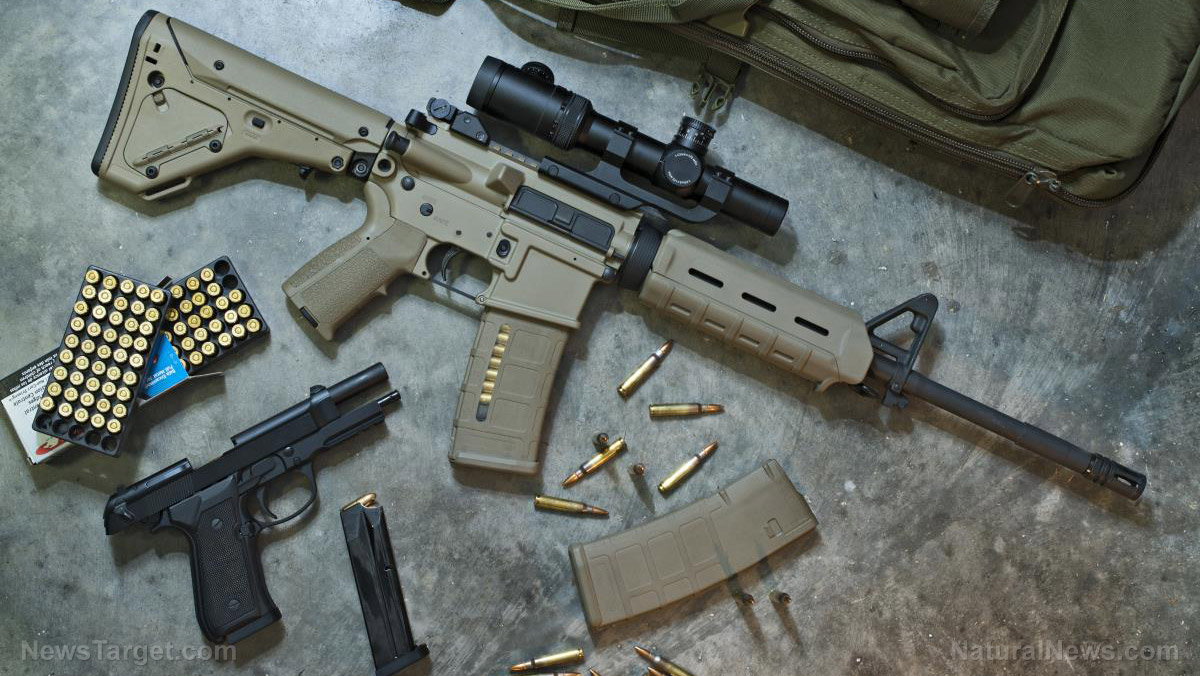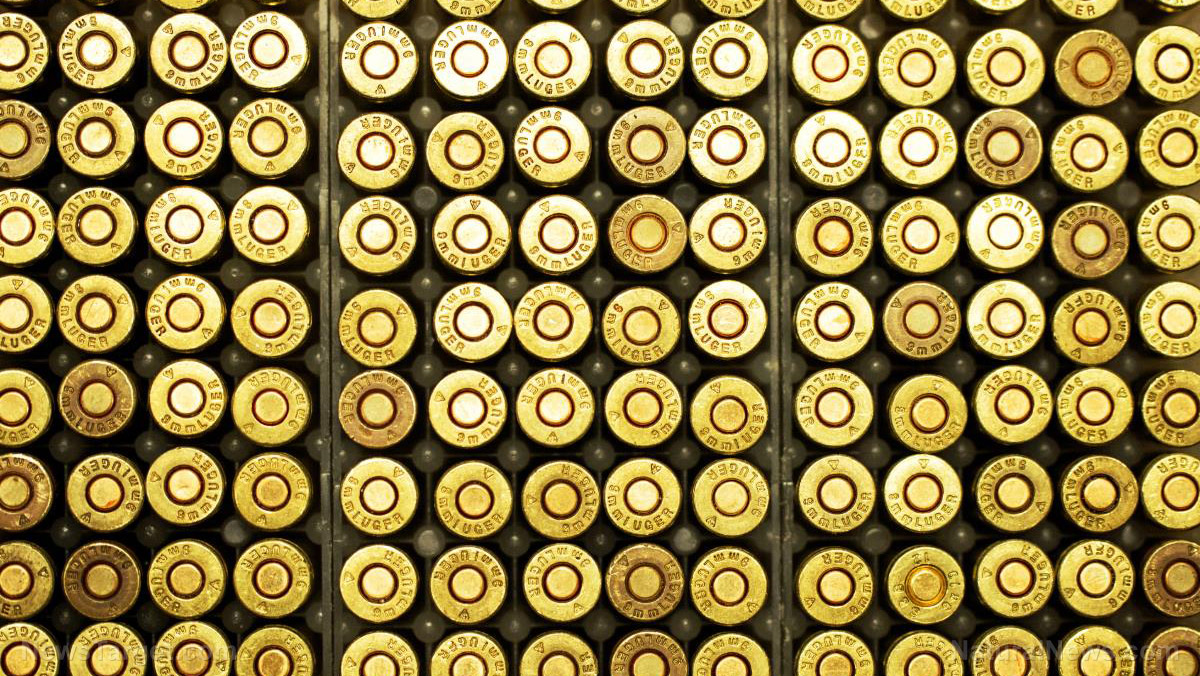
Guns won't let you down when SHTF if you make sure to have them checked for safety and function regularly. If you are planning to buy a gun, whether a new or a second-hand model, you should do a similar maintenance check to figure out if it's well worth your money. Here are some tips to ensure your guns are functioning at 100 percent. (h/t to SurvivalSullivan.com)
Before the function check begins, take the time to do a visual inspection of your firearm. Are there any cracks, pitting, chipping, erosion or any other forms of wear? What about the pins and screws? If they're loose or wobbly, that should be a cause for concern. Any sign of rust or other forms of corrosion on internal or external surfaces can also pose a problem if it's more than a tiny spot here and there. Any serious wear and tear should be checked out by a gunsmith immediately to ensure that your firearm remains usable. (Related: Brighteon.com launches self-defense how-to gun training series featuring former Navy SEAL and U.S. Marine combat instructor.)
Once this visual inspection is done, reassemble the gun to complete the checks listed below. Make sure that the gun isn't loaded and that the chamber is empty. Every action from hereon out must be performed with all ammunition entirely separated from the weapon.
Semi-automatic:
- Cycle slide to cock action. The slide should move without hesitation.
- Pull the trigger. The trigger pull should feel normal and you should hear the gun audibly snap.
- Depress the trigger and hold. Cycle the slide. Release the trigger slowly. The sear should reengage.
- Pull the trigger again. Once again, you should hear the gun audibly snap on the empty chamber.
- Insert your empty magazine. The magazine should lock firmly in place.
- Pull slide to the rear. The slide should be locked in place due to the empty magazine and chamber.
- Press the magazine release. The magazine should drop freely without hesitation.
- Depress the slide release. The slide should return to the battery.
- The decockers should return the hammer to its resting position, either at full-down or half-cock, depending on the model of your firearm.
- The gun's mechanical safeties should also be checked. Engage the safety and pull the trigger. The gun should be impossible to fire.
- Double-action/single-action (DA/SA) guns should be fired in double-action and single-action, respectively.
- DA/SA guns should be checked for "push off," or the accidental release of the hammer, by manually cocking and then firmly pushing the hammer toward the muzzle. The hammer should be able to resist your force whether or not the safety mechanisms are engaged.
Revolver, double-action:
- For your revolver, pull the trigger. The cylinder should rotate smoothly and without jamming. The hammer should audibly snap. If your gun has an external hammer, manually cock and press the trigger. The hammer should fall.
- Swing out the cylinder.
- Inspect the ejector rod. It should be tight and straight (for screw-in models). Rotate the cylinder and observe the ejector rod to verify straightness. If the ejector rod doesn't rotate, take a few extra seconds to inspect it to visually verify.
- Depress and hold the ejector rod. Look under the ejector for any debris that may prevent it from seating fully home.
- Release the ejector rod. The rod should travel smoothly on press and return.
- Pull the trigger (with the cylinder out). The firing pin should protrude from the breechface. Be sure there's no damage or any deformity. Older revolvers may have hammer-mounted firing pins. These can simply be cocked back manually to reveal the firing pin.
- Close the cylinder and, if present, manually cock the hammer. Check to see if the cylinder bolt is engaged by attempting to manually rotate the cylinder. The cylinder should not turn.
- Slowly pull the trigger, but not all the way. Only pull until you can observe the bolt engage cylinder. Hold the trigger in place as you try to rotate the cylinder. The cylinder should still not rotate, or only move a short distance before locking. If your gun has an external hammer, cock the hammer and check for push off.
This may all look tedious, but once you've done the function check plenty of times, it'll be ingrained into your muscle memory. Afterward, it should take you no more than a few minutes to do this.
When it comes to gun safety, no action should be too tedious, especially if it means preventing your firearm from accidentally discharging and hurting someone.
Sources include:
Please contact us for more information.





















